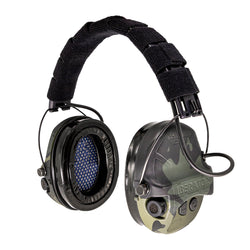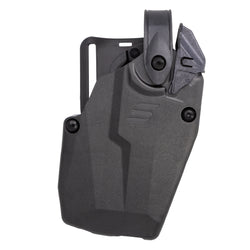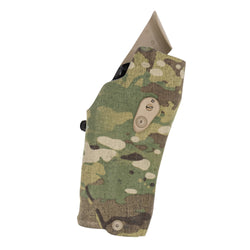Have you ever stopped to wonder if your camo gear serves any real purpose—or if it’s just fashion? I grew up around firearms, but it was mostly a hunting lifestyle back then. After becoming a police officer, I got more interested in tactical gear. That’s when I started to learn the difference between “tactical” and “tacticool.” Some gear serves a purpose. Some doesn’t.
I’ll admit, back then I thought anyone who bought tacticool gear just didn’t know better. Owning something that didn’t serve a practical purpose was just wrong…right?
But time changes your perspective. As I moved through my law enforcement career, I started to understand “tacticool.” Sometimes it’s okay to have something that’s just fun. Not everything you own has to serve a practical tactical function.

Understanding Tactical vs. Tacticool
So, is it tactical or tacticool? And more importantly, does it really matter?
When it comes to camo, it’s helpful to understand the difference. But that doesn’t mean one is good and the other is bad. Just because you’re not using something to break up your silhouette on a combat mission doesn’t mean it’s wrong to own. What is important is that you understand the difference between the two. Other than that, buy the gear that makes you happy, even if it’s not tactical gear.
Let’s break down the difference, specifically as it relates to camo gear and holsters.
Tactical: When camouflage serves a purpose
At its core, camouflage is a tool of deception. Its primary purpose on the battlefield or in the wild is to help you blend in with your environment. It helps to break up your silhouette and makes you harder to detect.

This is why you see different types of camouflage used in different environments. Desert camo favors brown and tan hues. Woodland camo leans into greens, browns, and black. There isn’t a perfect camo pattern or color scheme; it all depends on your surroundings.
The Science of Concealment
As I mentioned above, effective camouflage is designed to disrupt the observer’s ability to detect and recognize a person or object. It uses a combination of colors, patterns, and tones that mimic a specific environment to reduce your visual signature. This gives you more time to observe, orient, decide, and act.
A System, Not a Single Piece
To be truly effective, camouflage is applied as a complete system. You don’t just throw on camo pants and call it good. Your entire loadout should match your environment.

Examples of effective camo gear include:
- Combat uniforms (BDUs/ACUs)
- Plate carriers and tactical vests
- Ballistic helmets
- Backpacks and pouches
- Rifles and weapon systems
- Even large items like vehicles and tarps
Skill First. Gear Second
The best gear in the world is just that—gear. It’s the user that makes it tactical. You need a proper understanding of your gear, mission, and tactics to complete that mission. You also need a lot, a lot, a lot, of training to best utilize your gear. And yes, I know I said “a lot” a lot of times, that was intended.
Over the years, I’ve learned that a person’s experience, knowledge, and passion for a job are the driving forces behind how well they do at it. Good gear is like a booster that helps you do the job better, but you can be exceptional with basic gear. Inexperience and lack of training, even with the best gear, is not helpful and often becomes a liability.

Paul Costa, a Safariland CADRE member, gave the best explanation of this when he said:
“Camo is designed to assist us in maintaining the most critical component in fighting, which is the element of surprise. No amount of gear or kit can make up for the lack of skill and institutional knowledge of a particular craft.
“But when quality gear is paired with a highly skilled end user, their capabilities are exponentially increased. The more you focus your energy on skill development, the less you will need to rely on gear and equipment.”
Ultimately, practical camo is a force multiplier. It complements your skills—but it doesn’t replace them.
Tacticool: When Gear is Just for Fun
Now for the other side of the coin: the world of “tacticool.”
Some folks love to gripe about camo gear that doesn’t serve a tactical purpose. But there’s nothing at all wrong with owning gear because it looks cool with that camo pattern or some other tactical feature.
What is important is that you understand the difference. Tacticool gear is not tactical gear.
Take holsters, for example. I use my Safariland 6354RDSO holster as part of my duty gear when serving high-risk search warrants. Because I live in a rural area and we tend to operate in wooded and rural areas, my gear is MultiCam®. A black holster would stand out.

But Safariland also makes the Incog X IWB (inside the waistband) holster with multiple camo finishes. The difference? The duty holster serves a tactical purpose. The IWB holster is tacticool—it’s fashion.
And that’s totally fine.

Camo as Personal Style
Why buy a camo-patterned IWB holster no one else will see? I would ask why not? Multicam Black™ and MultiCam® are two of my favorite camo patterns. Having a camo pattern on a holster I stick inside my pants serves absolutely zero purposes. But if I’m going to carry it every day, why not get something I like?
Same goes for shirts, socks, hats—heck, even camo underwear. It’s a personal style choice.
My grandfather served in WWII and was stationed in Germany up until the end of the war. He always carried a small, green pocketknife, the same color as what they wore during WWII. It wasn’t tactical, it was meaningful because it reminded him of his time in service.

Don’t Confuse the Two
Problems only arise when people confuse fashion for function. Wearing camo to a tactical course doesn’t make you “tactical.” Buying a cool-looking piece of gear doesn’t mean you understand how to use it.
Tacticool is fine. Tactical is fine. But they aren’t the same thing.
Common examples of tacticool items:
- IWB holsters
- Phone cases, wallets, keychains
- Socks, hats, and casual apparel
- Hunting gear worn under a blaze-orange vest
- Vehicle accessories like seat covers or steering wheel wraps
Tactical Gear Doesn’t Have to Look Cool
Tactical gear doesn’t always look pretty, but it serves a purpose.
One example I like to use when it comes to camo is rifles. A camo-coated rifle with a glossy finish looks great on a rack, but the camo doesn’t make it stealthier than any other rifle. It’s a great-looking fashion statement.
Tactical camo painted on a rifle often looks dull, scuffed, and uneven because it’s applied for function, not aesthetics.
And that’s the difference. One is meant to look good. The other is meant to work well.
Final Thoughts
Tacticool isn’t tactical—but it is fun. And sometimes we all need a little fun.
Buy the gear that makes you happy. Just know why you’re buying it. If it’s for fashion, great. If it’s for function, make sure it works in your environment and you know how to use it.
As long as you’re not confusing the two, you’re good to go.









